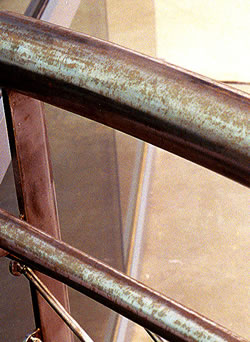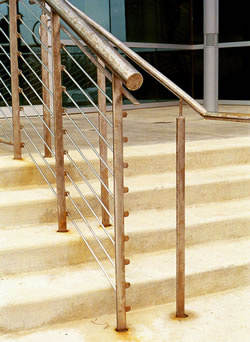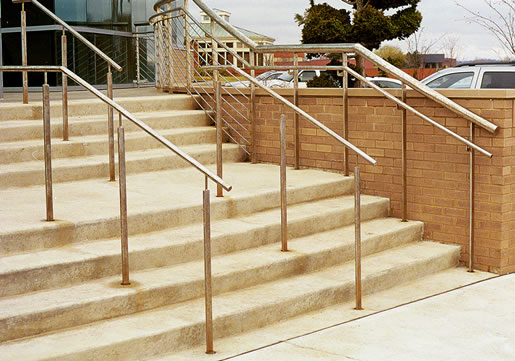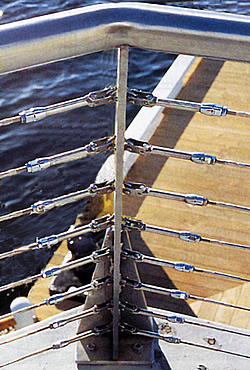By Catherine Houska, TMR Stainless (Consultants to IMOA)
Summary
Handrails are expected to meet both structural safety and aesthetic requirements. Traditional carbon steel, cast iron, and aluminum handrails can deteriorate quickly in exterior or industrial installations with aggressive pollution and/or chloride exposure. In these environments, molybdenum-free Type 304 stainless steel handrails provide longer service life, but regular cleaning and/or coatings are required to maintain an attractive appearance.
More corrosion resistant Type 316 stainless steel handrails, which contain 2% molybdenum, are the most cost effective choice in demanding environments. They require minimal maintenance, no paint or coating and provide safety and an attractive appearance. In stainless steel, molybdenum improves resistance to pitting and crevice corrosion and is particularly helpful in preventing chloride damage.
The growth potential for Type 316 stainless steel in aggressive exterior applications is significant and is not limited to handrails. Doors, canopies, store fronts, street furniture, bus shelters, trash cans, bicycle racks, security barriers, gates, fences, wall panels and column covers, all face the same corrosion challenges in salty or polluted environments.
The Application
In new or existing applications, stainless steel is increasingly replacing carbon steel and aluminum handrails because of concern about safety, long-term maintenance and replacement costs, and because of fashion. Growth in stainless steel handrail use has been greatest in areas where coastal or deicing salts are present and/or where pollution levels are high. In some sectors of the North American exterior handrail market, stainless steel has close to a 30% market share. Industrial applications are a small but rapidly growing market for stainless steel, particularly in corrosive plant environments.
Fabricators and specifiers are often unaware of the benefits of using a molybdenum containing stainless steel. The stainless steel most commonly specified is Type 304 with a polished finish. Type 316 is most likely to be specified in industrial applications or within a few hundred feet of a saltwater body. It is rarely used in locations with deicing salt exposure.
The Corrosion
Deicing salt can create a more aggressive environment than what is found in most coastal applications. It is not unusual to see piles of salt crystals around exterior handrails. Even with regular maintenance, traditional carbon steel and aluminum handrails may have to be replaced in as little as five to ten years.




